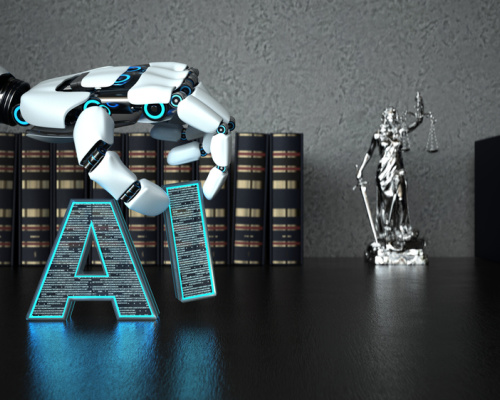We Create and Deliver What Generative AI Can’t: Copyrightable Intellectual Property
Date
Right now, the intellectual property rights of output produced by a generative AI is uncertain, untested, and open to constant interpretation and debate. For that reason, we are extremely careful about using generative AI in our work for our clients.
First, a Bit About Intellectual Property
The fundamental output of everything we produce at Clarity is intellectual property, whether it’s code, content, visual or instructional design, product strategy, apps, websites, interactive learning experiences, etc. Every client requires us to warrant (promise), indemnify, and hold harmless that our deliverables are original productions developed exclusively by our team which becomes their property when we’re paid. They rely on our 108 combined years of classroom experience, 83 combined years of product development experience, and 47 combined years of visual design and user experience—all of it from a team of 31 humans. When we use someone else’s intellectual property in any work we do, it requires explicit permission from the original author.
And there’s the rub: At the time of this blog post, there isn’t a generative AI that hasn’t scraped millions of pieces of pre-existing intellectual property from the Internet, content databases, social networks, and elsewhere, all without permission of the original intellectual property owner, and used the petabytes of data to train and tune the algorithms that generate “legible” output based on a human’s input prompt. For this reason, there’s significant ambiguity about whether the output from any generative AI is considered a derivative work, meaning, it is not original, but based on prior source material, or not, meaning it’s considered an original work.
For a business that generates 95% of its revenue from creating and transferring intellectual property, you can now understand why we’re hesitant about using generative AI. Not because it’ll replace us (try as they might, this won’t happen), but because our clients may not actually own the intellectual property, leaving them open to unknown liability. This isn’t something clients want, obviously!
Presently, the accepted interpretation of the United States Copyright Act is that only humans may author works that can be considered copyrightable intellectual property. Some readers may recall one test of this interpretation recently in the courts when a selfie taken by a macaque monkey was ruled not a copyrightable work. With the explosive growth of generative AI, the U.S. Copyright Office launched an initiative about AI in early 2023 to examine copyright law and its policies to address the ambiguities surrounding intellectual property. It has been overwhelmed by the feedback and complexity of the issue, and it may be 18-24 months before we have a clearer understanding of what, if anything, from a generative AI is a copyrightable work.
What This Means for Using Generative AI
We don’t use generative AI as the basis of our work since we simply don’t know whether the intellectual property generated by it would be considered infringing on others’ copyright. That is not a risk we’re comfortable taking for ourselves or on behalf of our clients. While generative AI won’t be the basis of any client deliverable we create while the intellectual property ambiguities are worked out, there are many other use cases where a generative AI may be used in different circumstances. Be sure to read Emily Russo’s post on some of those.
So What Happens Next?
Every day, there seems to be more news about generative AI—three more were probably announced in the time it took you to read this blog post! For this reason, I’ve framed my post as what is presently known, to reflect the rapidly changing landscape. Even since we first adopted the “no generative AI as client deliverable” policy internally back in February 2023, in the last six months, three major vendors have announced their generative AI tools have fully licensed intellectual property rights for derivative works, which permits us to incorporate their outputs into our deliverables for clients.
Let me close with a piece of advice: Anyone who claims they know what’s next for AI isn’t going to get it right—not even close. As predictors of the future, humans are usually incredibly wrong. I don’t know about you, but I’m still waiting for my jetpack, flying car, and robot assistant. In the meantime, our team is ready to help you create the kind of results that generative AI can only crudely approximate.

